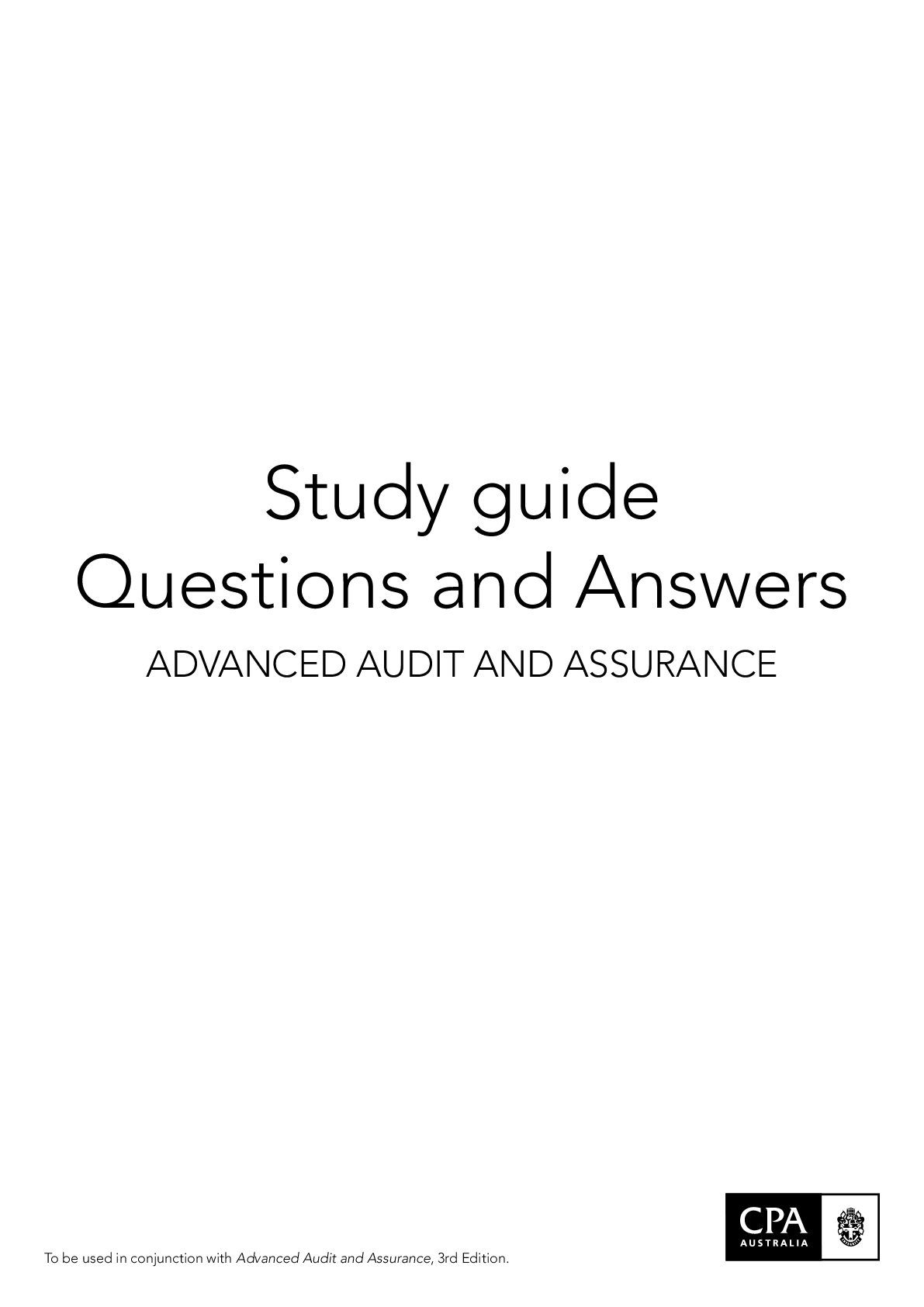Psychology > STUDY GUIDE > AP Psychology ALL Terms, Study guide Questions and answers. 2022/2023. Graded A+ (All)
AP Psychology ALL Terms, Study guide Questions and answers. 2022/2023. Graded A+
Document Content and Description Below
AP Psychology ALL Terms, Study guide Questions and answers. 2022/2023. Graded A+ psychology - ✔✔the science of behavior and mental processes nature-nurture issue - ✔✔the long-standing ... controversy over the relative contributions that genes and experience make to the development of psychological traits and behaviors natural selection - ✔✔the principle that, among the range of inherited trait variations, those contributing to reproduction and survival will most likely be passed on to succeeding generations neuroscience - ✔✔the perspective of psychological science that deals with how the body and brain create emotions, memories, and sensory experiences evolutionary - ✔✔the perspective of psychological science that deals with how nature selects traits that promote the perpetuation of one's genes behavior genetics - ✔✔the perspective of psychological science that deals with how much our genes, and our environment, influence our individual differences psychodynamic - ✔✔the perspective of psychological science that deals with how behavior springs from unconscious drives and conflicts behavioral - ✔✔the perspective of psychological science that deals with how we learn observable responses cognitive - ✔✔the perspective of psychological science that deals with how we encode, process, store, and retrieve information social-cultural - ✔✔the perspective of psychological science that deals with how behavior and thinking vary across situations and cultures basic research - ✔✔pure science that aims to increase the scientific knowledge base applied research - ✔✔scientific study that aims to solve practical problems clinical psychology - ✔✔a branch of psychology that studies, assesses, and treats people with psychological disorders psychiatry - ✔✔a branch of medicine dealing with psychological disorders, practiced by physicians who sometimes provide medical (for example, drug) treatments as well as psychological therapy hindsight bias (I-knew-it-all-along phenomenon) - ✔✔the tendency to believe, after learning an outcome, that one would have foreseen it critical thinking - ✔✔thinking that does not blindly accept arguments and conclusions. Rather, it examines assumptions, discerns hidden values, evaluates evidence, and assesses conclusions theory - ✔✔an explanation using an integrated set of principles that organizes and predicts observations hypothesis - ✔✔a testable prediction, often implied by a theory operational definition - ✔✔a statement of the procedures (operations) used to define research variables. For example, intelligence may be operationally defined as what an intelligence test measures replication - ✔✔repeating the essence of a research study, usually with different participants in different situations, to see whether the basic finding generalizes to other participants and circumstances case study - ✔✔an observation technique in which one person is studied in depth in the hope of revealing universal principles survey - ✔✔a technique for ascertaining the self-reported attitudes or behaviors of people, usually by questioning a representative, random sample of them false consensus effect - ✔✔the tendency to overestimate the extent to which others share our beliefs and behaviors population - ✔✔all the cases in a group, from which samples may be drawn for a study random sample - ✔✔a sample that fairly represents a population because each member has an equal chance of inclusion naturalistic observation - ✔✔observing and recording behavior in naturally occurring situations without trying to manipulate and control the situation correlation coefficient - ✔✔a statistical measure of the extent to which two factors vary together, and thus of how well either factor predicts the other scatterplot - ✔✔a graphed cluster of dots, each of which represents the values of two variables. The slope of the points suggests the direction of the relationship between the two variables. The amount of scatter suggests the strength of correlation (little scatter indicates high correlation). illusory correlation - ✔✔the perception of a relationship where none exists experiment - ✔✔a research method in which an investigator manipulates one or more factors (independent variables) to observe the effect on some behavior or mental process (the dependent variable). By random assignment of participants the experimenter controls other relevant factors) placebo - ✔✔an inert substance or condition that may be administered instead of a presumed active agent, such as a drug, to see if it triggers the effects believed to characterize the active agent double-blind procedure - ✔✔an experimental procedure in which both the research participants and the research staff are ignorant (blind) about whether the research participants have received the treatment or a placebo. Commonly used in drug-evaluation studies. placebo effect - ✔✔any effect on behavior caused by a placebo experimental condition - ✔✔the condition of an experiment that exposes participants to the treatment, that is, to one version of the independent variable control condition - ✔✔the condition of an experiment that contrasts with the experimental condition and serves as a comparison for evaluation the effect of the treatment random assignment - ✔✔assigning participants to experimental and control conditions by chance, thus minimizing preexisting differences between those assigned to the different groups independent variable - ✔✔the experimental factor that is manipulated; the variable whose effect if being studied dependent variable - ✔✔the experimental factor--in psychology, the behavior or mental process--that is being measured; the variable that may change in response to the manipulations of the independent variable mode - ✔✔the most frequently occurring score in a distribution mean - ✔✔the arithmetic average of a distribution, obtained by adding the scores and then dividing by the number of scores median - ✔✔the middle score in a distribution; the scores are above it and half are below it range - ✔✔the difference between the highest and lowest scores in a distribution standard deviation - ✔✔a computed measure of how much scores vary around the mean score statistical significance - ✔✔a statistical criterion for rejecting the assumption of no differences in a particular study culture - ✔✔the enduring behaviors, ideas, attitudes, and traditions shared by a large group of people and transmitted from one generation to the next Biological psychology - ✔✔concerned with links between biology and behavior Neuron - ✔✔building blocks of the nervous system Dendrite - ✔✔Branches designed to receive/send/and transport information Axon - ✔✔transports messages to different muscles/glands in the body Action potential - ✔✔a neural impulse; a brief electrical charge that travels down an axon. The action potential is generated by the movement of positively charged atoms in and out of channels in the axon's membrane. Myelin sheath - ✔✔a layer of fatty tissue segmentally encasing the fibers of many neurons; enables vastly greater transmission speed of neural impulses as the impulse hops from one node to the next Threshold - ✔✔the level of stimulation required to trigger a neural impulse Synapse - ✔✔the junction between the axon tip of the sending neuron and the dendrite or cell body of the receiving neuron. The tiny gap at this junction is called the synaptic gap or cleft Neurotransmitters - ✔✔chemical messengers that traverse the synaptic gaps between neurons. When released by the sending neuron, neurotransmitters travel across the synapse and bind to receptor sites on the receiving neuron, thereby influencing whether it will generate a neural impulse Acetylcholine - ✔✔a neurotransmitter that, among its functions, triggers muscle contraction Endorphins - ✔✔"morphine within" - natural, opiatelike neurotransmitters linked to pain control and to pleasure. Nervous system - ✔✔the body's speedy, electrochemical communication system, consisting of all the nerve cells of the peripheral and central nervous systems. Central nervous system (CNS) - ✔✔the brain and spinal cord Peripheral nervous system (PNS) - ✔✔The sensory and motor neurons that connect the central nervous system (CNS) to the rest of the body Nerves - ✔✔Neural "cables" containing many axons. These bundled axons, which are part of the peripheral nervous system, connect the central nervous system with muscles, glands, and sense organs Sensory neurons - ✔✔neurons that carry incoming information from the sense receptors to the central nervous system Interneurons - ✔✔central nervous system neurons that intervene between the sensory inputs and motor outputs Motor neurons - ✔✔The neurons that carry outgoing information from the central nervous system to the muscles and glands Somatic nervous system - ✔✔the division of the peripheral nervous sytem that controls the body's skeletal muscles. Autonomic nervous system - ✔✔the part of the peripheral nervous system that controls the glands and the muscles of the internal organs (such as the heart). Its sympathetic division arouses; its parasympathetic division calms. Sympathetic nervous system - ✔✔The division of the autonomic nervous system that arouses the body, mobilizing its energy in stressful situations Parasympathetic nervous system - ✔✔The division of the autonomic nervous system that calms the body, conserving its energy Reflex - ✔✔a simple, automatic, inborn response to a sensory stimulus, such as the knee-jerk response Neural networks - ✔✔interconnected neural cells. With experience, networks can learn, as feedback strengthens or inhibits connections that produce certain results. Computer stimulations of neural networks show analogous learning. Phrenology - ✔✔an ill-fated theory that claimed bumps on the skull could reveal our mental abilities and our character traits. lesion - ✔✔tissue destruction. A brain lesion is a naturally or experimentally caused destruction of brain tissue EEG (electroencephalogram) - ✔✔an amplified recording of the waves of electrical activity that sweep across the brain's surface. These waves are measured by electrodes placed on the scalp CT (computed tomography) - ✔✔a series of x-ray photographs taken from different angles and combined by computer into a composite representation of a slice through the body PET (positron emission tomography) - ✔✔a visual display of brain activity that detects where a radioactive form of glucose goes while the brain performs a given task MRI (magnetic resonance imaging) - ✔✔a technique that uses magnetic fields and radio waves to produce computer-generated images that distinguish among different types of soft tissue; allows us to see structures within the brain brainstem - ✔✔the oldest part and central core of the brain, beginning where the spinal cord swells as it enters the skull; the brainstem is responsible for automatic survival functions medulla - ✔✔the base of the brainstem; controls heartbeat and breathing reticular formation - ✔✔a nerve network in the brainstem that plays an important role in controlling arousal thalamus - ✔✔the brain's sensory switchboard, located on top of the brainstem; it directs messages to the sensory receiving areas in the cortex and transmits replies to the cerebellum and medulla cerebellum - ✔✔the "little brain" attached to the rear of the brainstem; it helps coordinate voluntary movement and balance limbic system - ✔✔a doughnut-shaped system of neural structures at the border of the brainstem and cerebral hemispheres; associated with emotions such as fear and aggression and drives such as those for food and sex. Includes the hippocampus, amygdala, and hypothalamus amygdala - ✔✔two almond-shaped neural clusters that are components of the limbic system and are linked to emotion hypothalamus - ✔✔a neural structure lying below the thalamus; it directs several maintenance activities (eating, drinking, body temperature), helps govern the endocrine system via the pituitary gland, and is linked to emotion cerebral cortex - ✔✔the intricate fabric of interconnected neural cells that covers the cerebral hemispheres; the body's ultimate control and information-processing center glial cells - ✔✔cells in the nervous system that are not neurons but that support, nourish, and protect neurons frontal lobes - ✔✔the portion of the cerebral cortex lying just behind the forehead; involved in speaking and muscle movements and in making plans and judgement parietal lobes - ✔✔the portion of the cerebral cortex lying at the top of the head and toward the rear; includes the sensory cortex occipital lobes - ✔✔the portion of the cerebral cortex lying at the back of the head; includes the visual areas, which receive visual information from the opposite visual field temporal lobes - ✔✔the portion of the cerebral cortex lying roughly above the ears, includes the auditory areas, each of which receives auditory information primarily from the opposite ear motor cortex - ✔✔an area at the rear of the frontal lobes that controls voluntary movements sensory cortex - ✔✔the area at the front of the parietal lobes that registers and processes body sensations association areas - ✔✔areas of the cerebral cortex that are not involved in primary motor or sensory functions; rather, they are involved in higher mental functions such as learning, remembering, thinking, and speaking aphasia - ✔✔impairment of language, usually caused by left hemisphere damage to either Broca's area (impairing speaking) or to Wernicke's area (impairing understanding) Broca's Area - ✔✔an area of the frontal lobe, usually in the left hemisphere, that directs the muscle movements involved in speech Wernicke's area - ✔✔a brain area involved in language comprehension and expression; usually in the left temporal lobe plasticity - ✔✔the brain's capacity for modification, as evident in the brain reorganization following damage (especially in children) and in experiments on the effects of experience on brain development corpus callosum - ✔✔the large band of neural fibers connecting the two brain hemispheres and carrying messages between them split brain - ✔✔a condition in which the two hemispheres of the brain at isolated by cutting the connecting fibers (mainly those of the corpus callosum) between them endocrine system - ✔✔the body's "slow" chemical communication system; a set of glands that secrete hormones into the bloodstream hormones - ✔✔chemical messengers, mostly those manufactured by the endocrine glands, that are produced in one tissue and affect another adrenal glands - ✔✔a pair of endocrine glands just above the kidneys. The adrenals secrete the hormones epinephrine (adrenaline) and norepinephrine (nonadrenaline), which help to arouse the body in times of stress pituitary gland - ✔✔the endocrine system's most influential gland. Under the influence of the hypothalamus, the pituitary regulates growth and controls other endocrine glands. learning - ✔✔a relatively permanent change in an organism's behavior due to experience associative learning - ✔✔learning that certain events occur together. The events may be two stimuli (as in classical conditioning) or a response and its consequences (as in operant conditioning) behaviorism - ✔✔the view that psychology 1) should be an objective science that 2) studies behavior without reference to mental processes. Most research psychologists today agree with 1) but not with 2). classical conditioning - ✔✔a type of learning in which an organism comes to associate stimuli. A neutral stimulus that signals an unconditioned stimulus (UCS) begins to produce a response that anticipates and prepares for the unconditioned stimulus. unconditioned response (UCR) - ✔✔in classical conditioning, the unlearned, naturally occurring response to the unconditioned stimulus (UCS), such as salivation when food is in the mouth. unconditioned stimulus (UCS) - ✔✔in classical conditioning, a stimulus that unconditionally--naturally and automatically--triggers a response. conditioned response (CR) - ✔✔in classical conditioning, the learned response to a previously neutral conditioned stimulus (CS) conditioned stimulus (CS) - ✔✔in classical conditioning, an originally irrelevant stimulus that, after association with an unconditioned stimulus (UCS), comes to trigger a conditioned response (CR) acquisition - ✔✔the initial stage in classical conditioning; the phase associating a neutral stimulus with an unconditioned stimulus so that the neutral stimulus comes to elicit a conditioned response. In operant conditioning, the strengthening of a reinforced response extinction - ✔✔the diminishing of a conditioned response; occurs in classical conditioning when an unconditioned stimulus (UCS) does not follow a conditioned stimulus (CS); occurs in operant conditioning when a response is no longer reinforced spontaneous recovery - ✔✔the reappearance, after a rest period, of an extinguished conditioned response generalization - ✔✔the tendency, once a response has been conditioned, for stimuli similar to the conditioned stimulus to elicit similar responses discrimination - ✔✔in classical conditioning, the learned ability to distinguished between a conditioned stimulus and other stimuli that do not signal an unconditioned stimulus operant conditioning - ✔✔a type of learning in which behavior is strengthened if followed by reinforcement or diminished if followed by punishment respondent behavior - ✔✔behavior that occurs as an automatic response to some stimulus; Skinner's term for behavior learned through classical conditioning operant behavior - ✔✔behavior that operates on the environment, producing consequences law of effect - ✔✔Thorndike's principle that behaviors followed by favorable consequences become more likely, and that behaviors followed by unfavorable consequences become less likely operant chamber ("Skinner box") - ✔✔a chamber containing a bar or key that an animal can manipulate to obtain a food or water reinforcer, with attached devices to record the animal's rate of bar pressing or key pecking. Used in operant conditioning research shaping - ✔✔an operant conditioning procedure in which reinforcers guide behavior toward closer and closer approximation of a desired goal reinforcer - ✔✔in operant conditioning, an event that strengthens the behavior it follows primary reinforcer - ✔✔an innately reinforcing stimulus, such as one that satisfies a biological need conditioned reinforcer (or secondary reinforcer) - ✔✔a stimulus that gains its reinforcing power through its association with a primary reinforcer continuous reinforcement - ✔✔reinforcing the desired response every time it occurs partial (intermittent) reinforcement - ✔✔reinforcing a response only part of the time; results in slower acquisition of a response but much greater resistance to extinction than does continuous reinforcement fixed-ratio schedule - ✔✔in operant conditioning, a schedule of reinforcement that reinforces a response only after a specified number of responses variable-ratio schedule - ✔✔in operant conditioning, a schedule of reinforcement that reinforces a response after an unpredictable number of responses fixed-interval schedule - ✔✔in operant conditioning, a schedule of reinforcement that reinforces a response only after a specified time has elapsed. variable-interval schedule - ✔✔in operant conditioning, a schedule of reinforcement that reinforces a response at unpredictable time intervals punishment - ✔✔an event that decreases the behavior that it follows cognitive map - ✔✔a mental representation of the layout of one's environment. For example, after exploring a maze, rats act as if they have learned a cognitive map of it. latent learning - ✔✔learning that occurs but is not apparent until there is an incentive to demonstrate it overjustification effect - ✔✔the effect of promising a reward for doing what one already likes to do. The person may now see the reward, rather than intrinsic interest, as the motivation for performing the task. observational learning - ✔✔learning by observing others modeling - ✔✔the process of observing and imitating a specific behavior prosocial behavior - ✔✔positive, constructive, helpful behavior. The opposite of antisocial behavior. memory - ✔✔the persistence of learning over time through [Show More]
Last updated: 1 year ago
Preview 1 out of 42 pages

Buy this document to get the full access instantly
Instant Download Access after purchase
Add to cartInstant download
We Accept:

Also available in bundle (1)
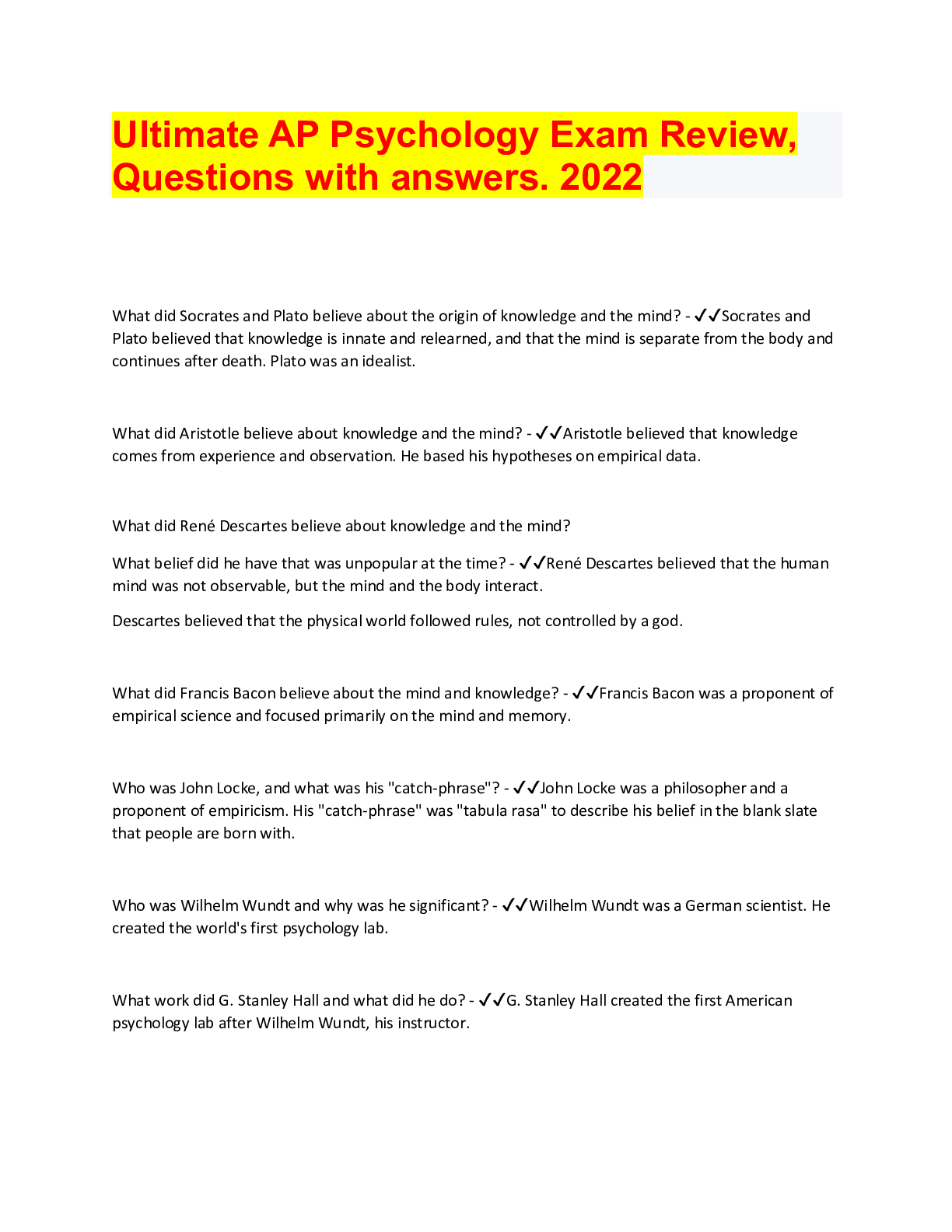
AP Psychology bundle. latest updates, Graded A+
Comprises of all exam questions and answers
By bundleHub Solution guider 1 year ago
$28
7
Reviews( 0 )
$9.00
Document information
Connected school, study & course
About the document
Uploaded On
Sep 01, 2022
Number of pages
42
Written in
Additional information
This document has been written for:
Uploaded
Sep 01, 2022
Downloads
0
Views
112



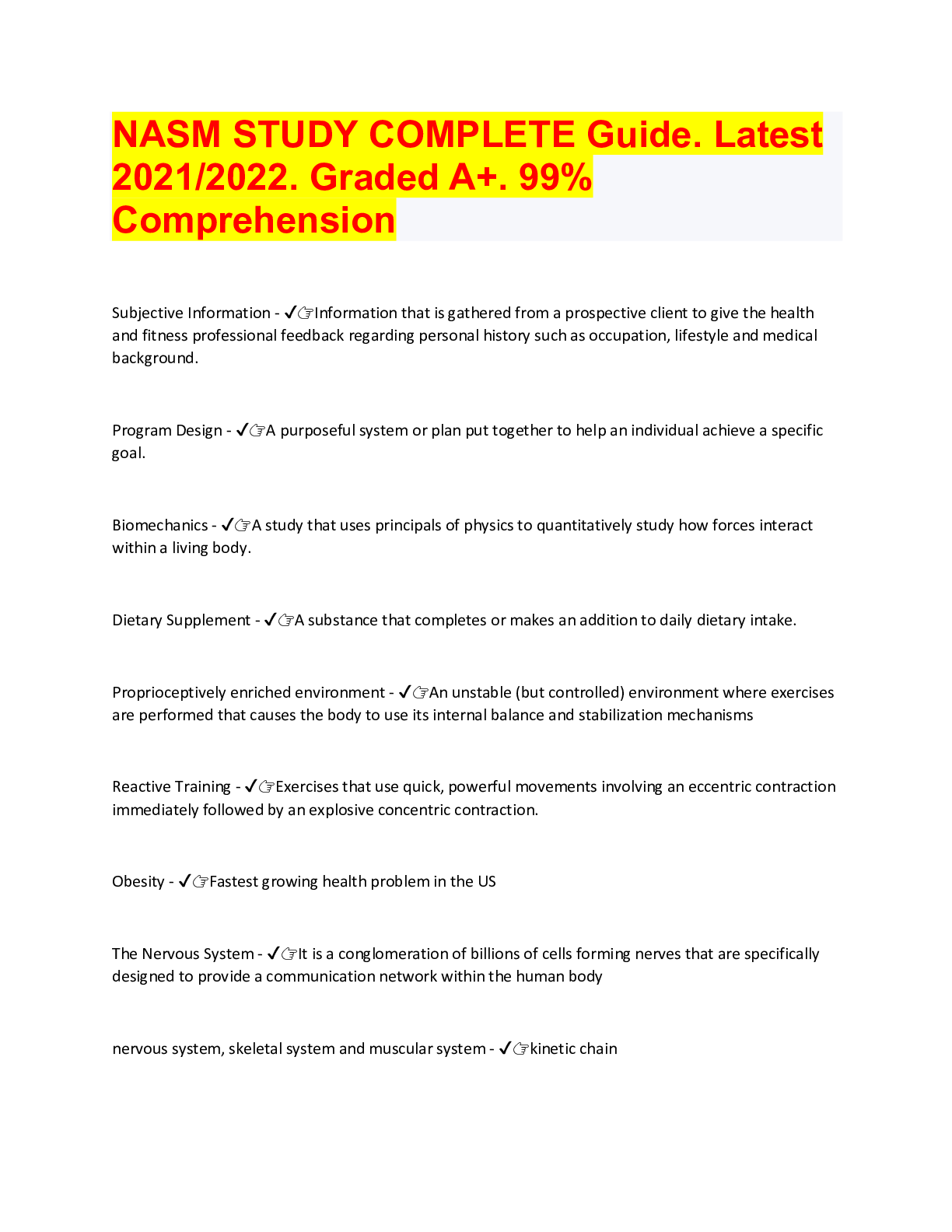


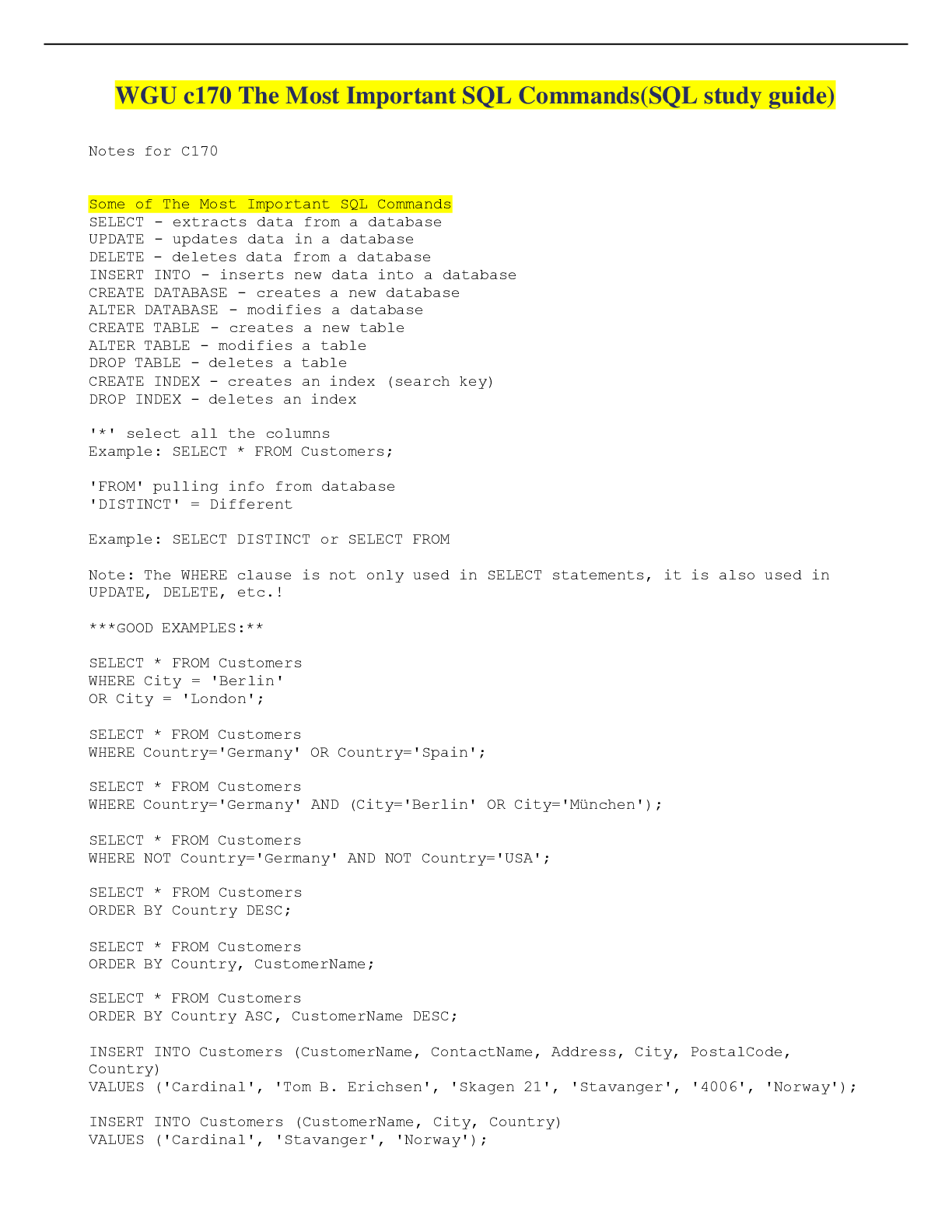

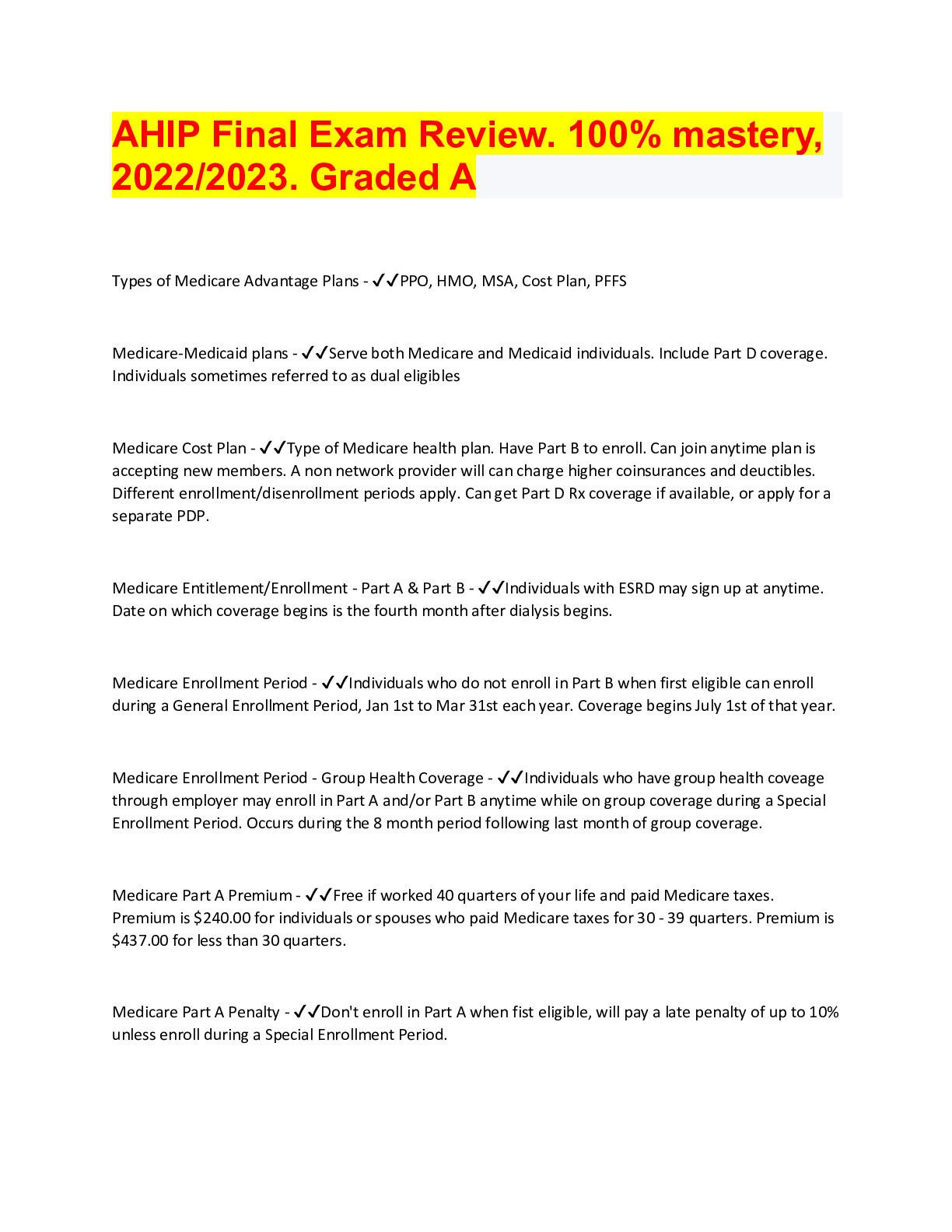

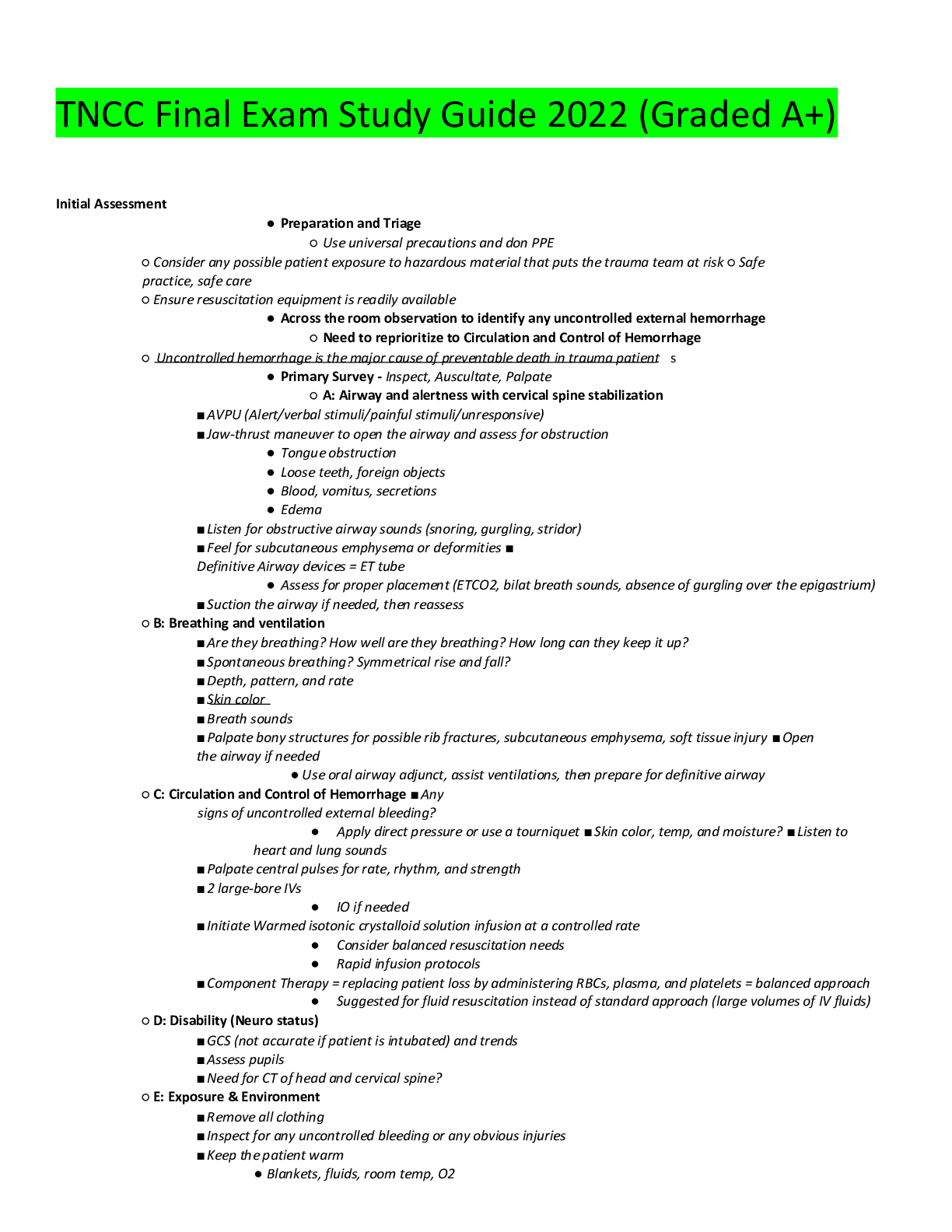
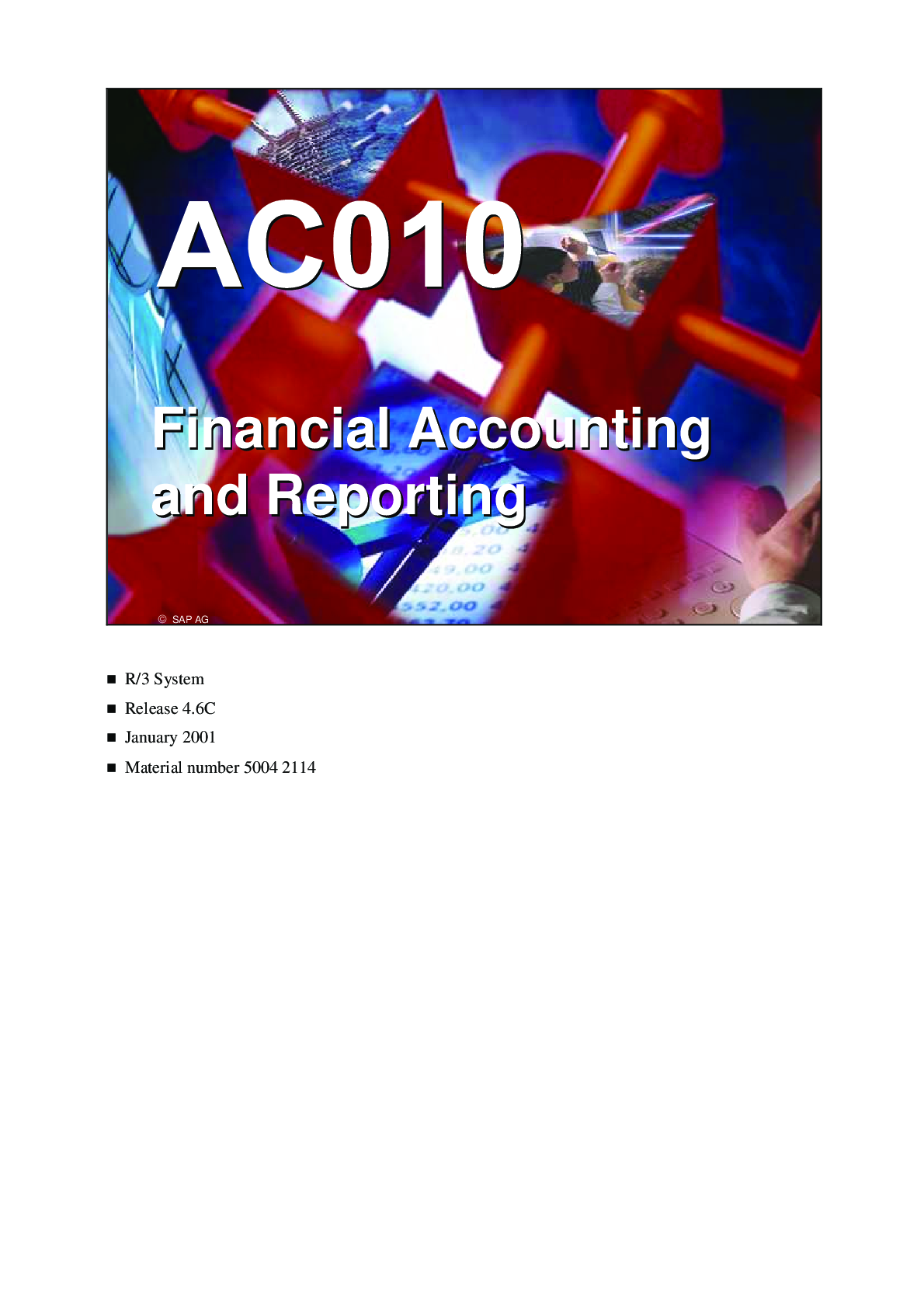


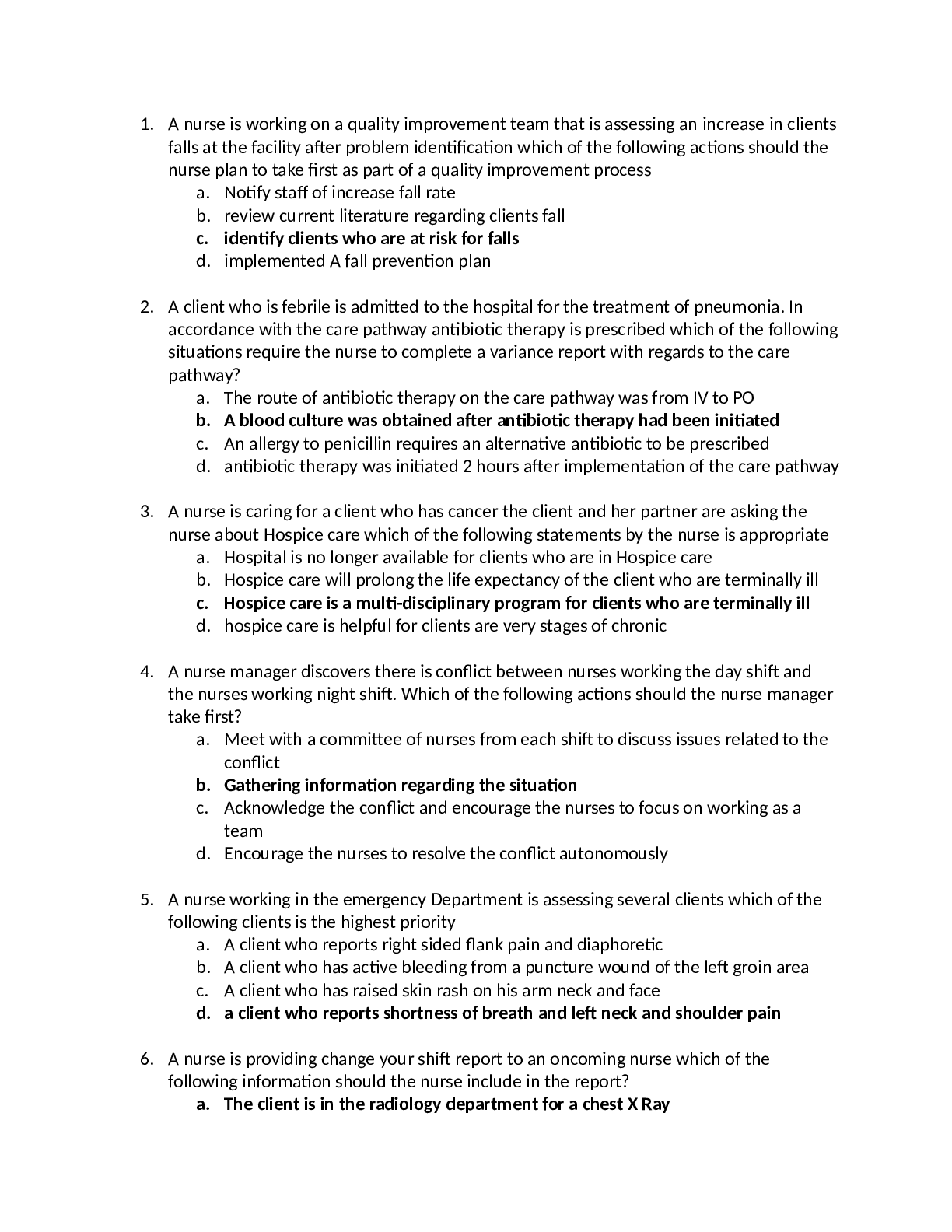
 Primary Care of the Maturing and Aged Family Practicum Midterm Study Guide.png)
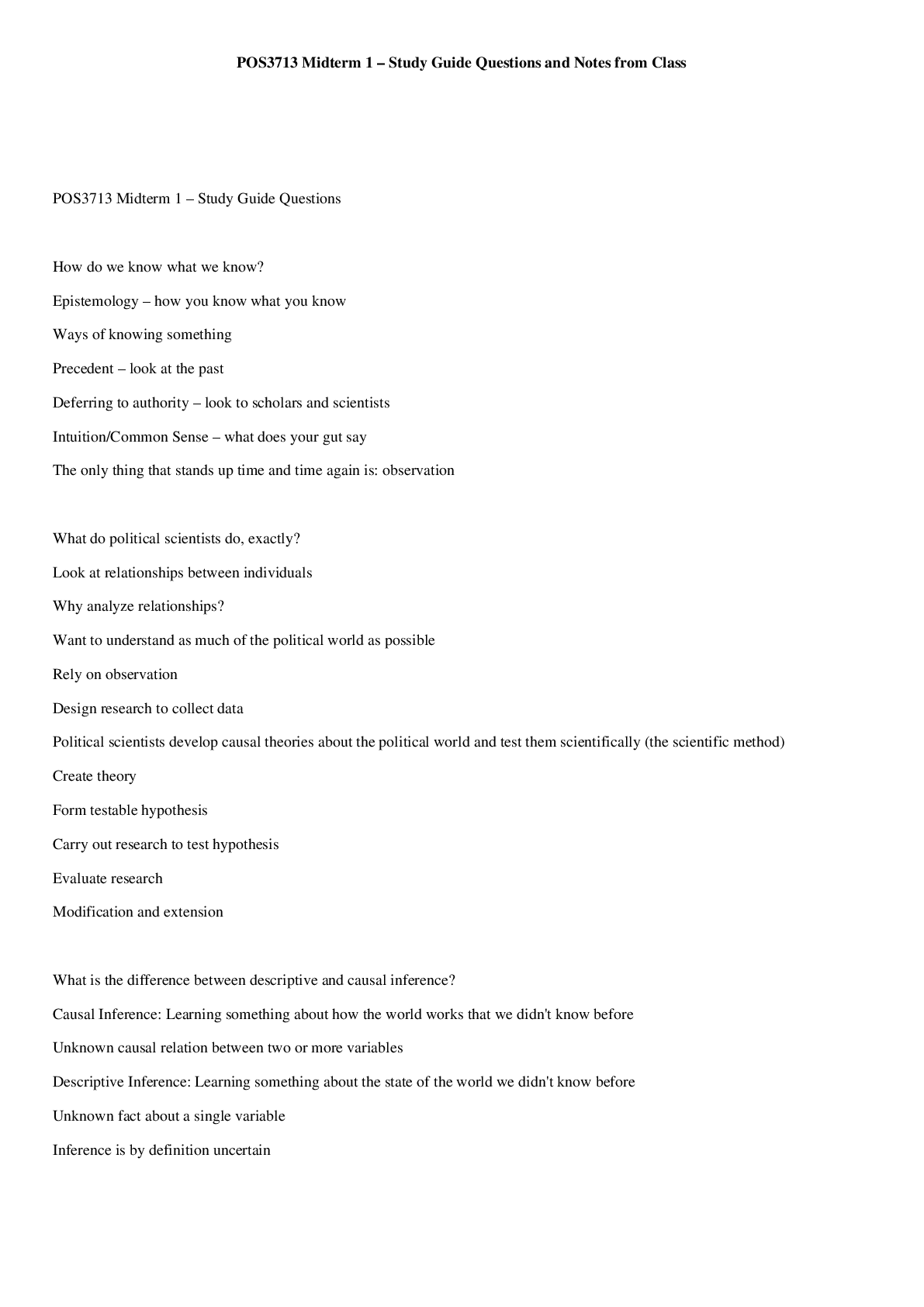
 Questions and Answers (latest Update).png)
 Questions and Answers (latest Update).png)
